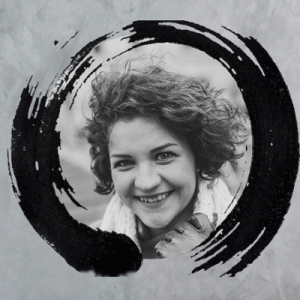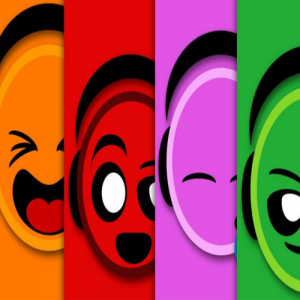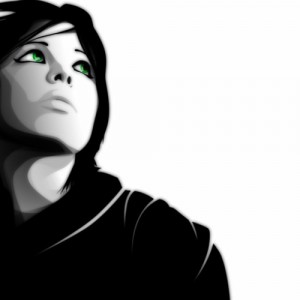The second part of my leading series is about connection and will cover how I create a physical and emotional connection with my partner. In the physical connection section, I will talk about my ideas behind preparation, initiation, development and finally the lead. In the emotional connection section I will talk about mood, energy, empathy and how this ties in to create an overall leading experience.
This blog was written in response to students and fellow dancers who have asked me about my Salsa philosophy; this is not about what is the right or wrong way but to share my perspective and give insight.
Disclaimer: This is not written to be a teaching guide. Some of the concepts described are difficult to master and require a lot of time and effort to learn, refine and master.
Physical Connection
Preparation for Connection
If you have been leading for a while you would have found some moves unusually difficult to lead even though you are giving the “correct” impulses. I personally believe that what makes or breaks a lead is how well you position yourself; being in the right position allows me to lead some ludicrously complicated moves with very little energy and provides plenty of time and room to cope with dance floor uncertainties.
To use a parallel parking metaphor you can make things a lot easier if you put the car in a better position before trying to reverse in. I often find that a lot of leaders develop lazy positioning (not to be confused with lazy stepping) and use energy to compensate or power the partner through which creates a bad leading experience.
Tips: Most people have a standard level of energy when leading. As a leader take time to think about the moves in your repertoire which requires unusually higher energy to lead.
Initiation a Connection
Once in a good leading position, the challenge is to initiate a soft but noticeable connection with your partner without disturbing your follower. When I lead I always try to create as much time as possible between the initiation of connection and the lead; this means that I will often make contact with hands even though it is not where I plan to lead. This, I believe, will give the followers an early indication of possible directions.
Being a dancer who often follows I know, first-hand, how hard it is to respond without any prior warning so as a leader I aim to provide as much time as possible to my followers.
Tip: Do you feel like you do not have enough time to fully prepare yourself or are struggling to stabilise your partner before performing a pattern. Think about connecting to your partner as soon as possible to buy you more time.
Developing the Connection
After optimizing my position and initiating a connection with my partner I will then develop the connection; this develops the connection from a light touch to the point before I perform a lead. During this development I will also use other tools to position my partner better for what is to come. To keep with the car metaphor this is the equivalent of lifting your foot slowly off the clutch and finding the biting point which prepares the car for movement.
I do the same when developing my connection and I will also use this opportunity to give early lead indications i.e. my follower should know where she is going with certainty before she even feels a lead; I refer to this as pre-leading.
Tip: Try thinking about leading from a follower’s perspective. How can you better prepare your partner? Yes, you should be thinking about your partner and the shared experience.
The Lead
Once you are positioned and you have established and developed a connection, the lead is all about giving the amount of impulse required to give a clear signal to my partner. All followers have different requirements so the amount of energy required will differ. Once again using the car metaphor, a good driver is not about being able to control a well-tuned car but being able to drive any car safely; this unfortunately only comes with experience. If I am dancing with a new partner the first 2-3 moves that I lead will give me an initial impression of my partner.
Note: This all happens within a split second and happens reflexively. Given that I no longer think about where I need to be or how to lead I spend my mental energies focusing on my partner and the music.
Emotional Connection
Mood
For me, the mood of a dance starts at hello. In the few short seconds between taking your partner’s hand and finding your spot on the dance floor, you have an opportunity to set the mood of the dance to come. Picture someone taking your hand and rushing you to the dance floor while bumping into other dancers and contrast this with a smooth considerate walk to the dance floor. Now think about how else you can put your partner at ease and set the mood.
Once I have established that I am going to have a dance with my partner I will always take a few seconds, there is no rush, I listen to the song, observe my partner and set an initial mood; it could be a cheeky grin, an excited giggle or just an expression of how this song is going to be played out.
Tip: On any given night you will have loads of opportunities to dance; there is no need to rush through and good manners are not expensive. Take a few moments before you dance to set the mood.
Energy
My preferred dance energy is chilled, small and simple. But I always try to match the energy that my partner gives which gives me a better chance of connecting with my partner. This synchronisation of energy gives me yet another way to connect with my partner, although at times it can be challenging.
Dancing with a high-energy and bubbly dancer takes me out of my comfort zone but I will always try to enjoy the moment and ensure that my partner enjoys the experience; the same is also applied to partners who want to really chill out during a dance.
Tip: Be observant. Energy levels are very easy to spot in Salsa. Fitness will be a big factor in your ability to match your follower.
Empathy
I remember being at The Great British Salsa Experience (GBSex) where I attended a partner work workshop with Milton Cobo. Milton said that every partner is different; some like it hard, some like it soft and it is all good. In the same light, some followers like footwork, some followers like space, and some followers want pure partner work. This is what makes Salsa wonderful as different followers have different wants and requirements. I always remember that the dance is not about me or the follower but a shared experience made up of compromises and mutual moments of bliss.
Tip: When I enter a room I always sit down for the first few songs and look at the dancers in the room and how I would dance with them; there is nothing wrong with being prepared for what may come.
Summary
Hopefully, this has given you some more insight into how I develop a connection with my followers. When I dance as a follower I also use all of the described concepts. As mentioned before this is not a teaching guide but if you do have questions comment below or send me a message.
The next article is going to be about opportunistic leading; it has been a long time since I repeated a class routine on the dance floor and unless you are really fortunate it would not fit the music. As such I use the concept of opportunistic leading to increase my responsiveness to music.
I hope you enjoyed this blog and found it both insightful and useful. I would love to know your opinions so please comment below or send me a message if you want to discuss them.





Leave a Reply